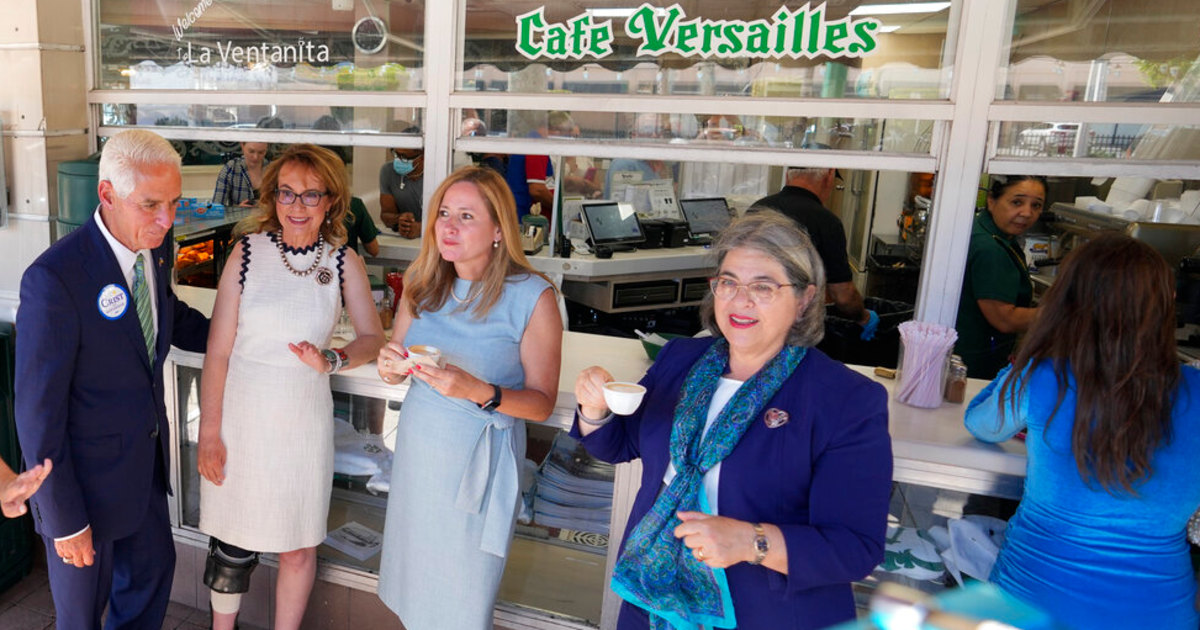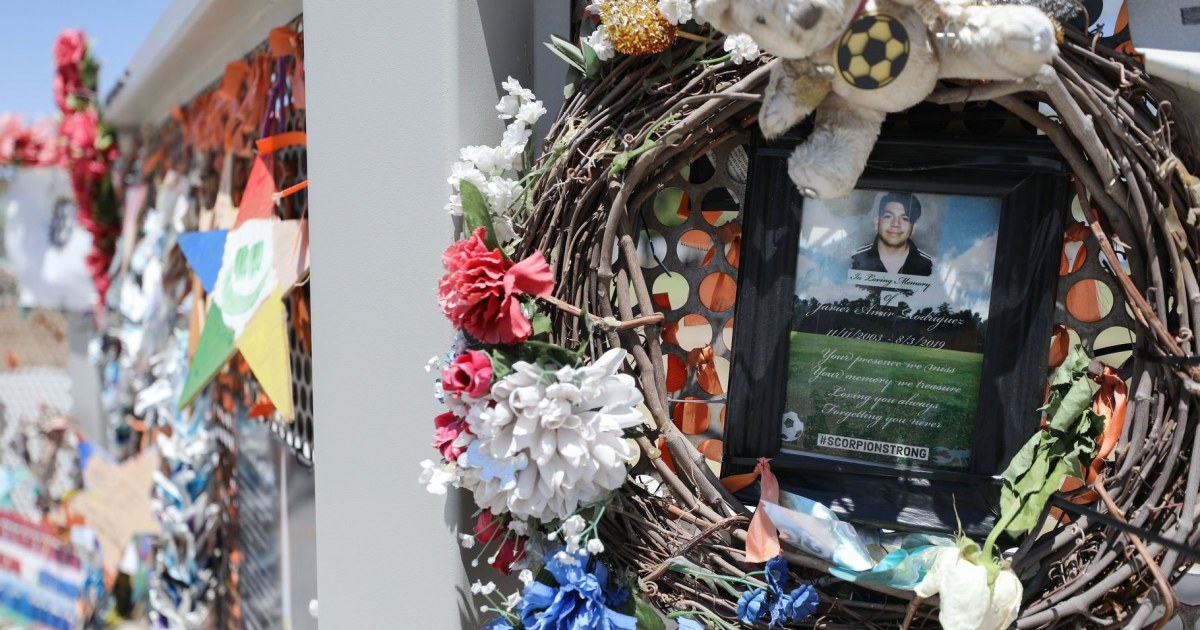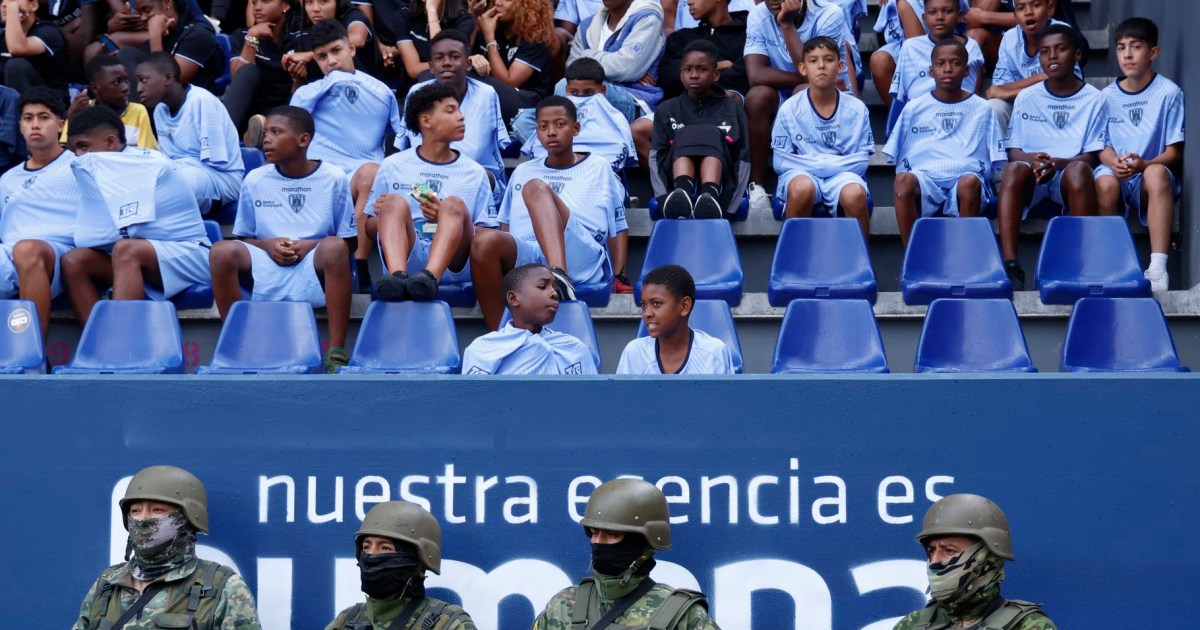By Marina E. Franco and Russell Contreras
Welcome to Axios Latino, a newsletter to tell you every Tuesday and Thursday the stories that have a special impact on the Latino communities in the United States and in Latin America. If you are interested in subscribing and receiving the newsletter in your email (in English), you can do so by clicking here. We will always publish it in Spanish on Noticias Telemundo. [Sign up here to read the newsletter in Spanish]
1 Topic: The Cost of Protecting the Environment
Latin America and the Caribbean are the
deadliest
region
for environmental defenders, a violent record that has global repercussions.
Why it matters
: The region has several of the most biodiverse areas on the planet, but they are constantly threatened by logging, mining or overexploitation of aquifers.
Rampaging those areas has global consequences, such as accelerating global warming when it is already at an alarmingly high point.
In many cases, the attacked civil activists are the only ones who oppose projects that are harmful to their communities.
Latin America has been a flash point for several years, but the attacks rose to their worst on record in 2020.
Colombian engineering Sandra Viviana Cuéllar is part of a long list of activists who have disappeared or have been killed for defending the environment in that country.
Luis Robayo / AFP via Getty Images
In figures
: Of the 227 murders recorded worldwide by Global Witness, 165 occurred in Latin American countries.
That is 72%, or nearly three out of four.
Colombia had the highest number of victims, with 65 lethal attacks, followed by Mexico with 30 murders and Brazil with 20.
Honduras, Guatemala and Nicaragua had the fifth, seventh and eighth highest number of deaths of environmental activists in the world.
Global Witness also emphasizes that many other attacks these activists face, such as death threats or sexual violence, go unreported.
Current outlook
: Most cases also go unpunished, leading to more violence, as "corruption in criminal justice systems often protects the governments and companies responsible for these killings," he told the AThe news agency. Associated Press UN Special Rapporteur Mary Lawlor.
A notable exception is the 2016 murder of Honduran Berta Cáceres, from the Lenca indigenous community, who was killed due to her protests against a hydroelectric dam.
His family tirelessly lobbied for justice in the country with the highest levels of impunity on the continent.
Those who shot Cáceres were sentenced in 2019 to 50 years in prison, while the businessman and US-trained intelligence officer who hired the killers was sentenced this past summer.
In his own words
: “We must realize that the people who are killed every year for defending their local populations were also defending the planet we share.
In particular, our climate, ”writes US environmentalist Bill McKibben in the Global Witness report.
2. Hispanic Heritage Month: Peru's heritage footprint
Potato, potato; tomato, tomato. It's a debate we owe to Peru
, where those two crops originated before becoming staples around the world.
Quechua farmers in the high Andes, where varieties of potatoes that do not exist elsewhere are still grown.Federico Tovoli / VWPics / Universal Images Group via Getty Images
Details
: The tubers we eat crushed, fried, baked, or diced were first cultivated in the Andes thousands of years ago.
Peru still has the widest variety of potatoes on the planet, around 4,000 native types.
Many of these varieties survive climates over 13,000 feet high (4,000 meters), and are considered "genetically resistant" to extreme weather changes.
Not only did their export help end frequent famines in northern and western Europe, it paved the way for modern industrial agriculture, says the Smithsonian Museum Magazine.
When the crop was adopted en masse on the other side of the Atlantic, Peruvian guano also began to be used as a fertilizer.
Similarly
, an April scientific study found that 90% of the genetic makeup of the modern tomato worldwide is of Peruvian origin.
Although the name of the red fruit comes from Mexico, where the Nahuas who domesticated the crop called it
tomatl
, it was adapted by the Spanish to the word we know today.
The best chef in the world opens her kitchen and teaches how to prepare a delicious dish
Aug. 6, 202102: 02
Noteworthy
: Several native Peruvian crops have also become popular around the world, including quinoa and other "superfoods" like maca and lucuma.
In summary
: Peru encompasses a variety of climates such that each region offers different culinary cultures that bring enormous diversity to Peruvian cuisine.
3. More Latinos without Health Insurance in Pandemic
Latinos of all ages were the least insured group
in the US last year, according to Census data released this week.
Latinos are the group of the US population with the least access to health insurance
Sept.
14, 202101: 21
In Numbers
: Broken down by age, 24.9% of Hispanics of working age and 9.5% of those under 19 years of age lacked health coverage in 2020.
The uninsured rate was higher for men who identified themselves as Hispanic on the Census than for women, at 19.9% and 16.6% respectively.
Both rates were 1.8 and 1.2 percentage points higher than in 2019, according to the data.
In previous surveys, the high cost of health insurance and ineligibility for Medicaid were cited as the two most common reasons why people of all races and ethnicities did not have health coverage.
Census data also shows that Hispanics in the United States had a median income of $ 55,321 in 2020, below the average of $ 67,521 for all races and ethnic groups in the country.
The number of Latinos living in poverty also increased 17%.
Bottom line
: Lack of insurance can create medical debt that is impossible to afford for those receiving treatment and can discourage people from going to the doctor or hospital, even during a pandemic.
"I have to be paying from my savings [...] from there I am surviving," Ernesto Vargas tells Noticias Telemundo.
4. An unprecedented prize: Mexico raffle houses of narcos
A
house
that had a secret tunnel that Joaquín
El Chapo
Guzmán
used to avoid capture in 2014 was one of 22 properties seized from drug lords that Mexico raffled off yesterday in a special edition of the lottery.
Above left, the house in Culiacán that belonged to El Chapo, along with three other properties confiscated from drug traffickers that were part of the prize in a special National Lottery drawing Photos courtesy of the Government of Mexico
What's happening
: It is the first time that the National Lottery has raffled real estate.
The property in Sinaloa was one of the prizes, along with the mansions that once belonged to Amado Carrillo, alias
El Señor de los Cielos,
and the American Édgar Valdez Villarreal, also known as
La Barbie
.
The winning prize also included a private box at the Azteca stadium, home to several historic World Cup matches, to be used until 2065.
The special raffle was in honor of the bicentennial that the independence of Mexico was formalized, which is celebrated today.
Proceeds from ticket sales are supposed to be used to support Mexican Paralympic athletes, who won 22 medals in Tokyo despite drastically reducing their budget by the government.
Important note
: Mexican authorities had already tried to auction
El Chapo's
old house
a year ago.
There were no buyers.
The government of Andrés Manuel López Obrador also tried to sell the presidential plane last year through the lottery.
5. Summary of key news from Latin America and the Caribbean
A 3-year-old Cuban girl is injected with a dose of Soberana Plus, of the coronavirus vaccines developed on the island, as part of a phase III test protocol for inoculation in minors, in August 2021.Adalberto Roque / AFP via Getty Images
Cuba has asked the World Health Organization
for approval of three of its five homegrown vaccines, called Abdala, Soberana 2 and Soberana Plus, and today it will begin vaccinating children from the age of two.
The per capita rate of COVID-19 infections on the island is one of the highest in the hemisphere.
Despite this, there are suspicions that there are undercounts.
Vaccines developed in Cuba have been reported to have efficacy rates of over 91% against serious coronavirus infections, although phase 3 results have not been published in peer-reviewed journals.
The leader of the Venezuelan opposition, Juan Guaidó,
was accused last Tuesday of alleged "theft of assets" and neglect of duty by the Attorney General's office, which is added to another two dozen charges against Guaidó, all which he denies as being politically motivated charges.
The most recent case was announced while Guaidó and the opposition have been in negotiations with the Nicolás Maduro regime after years of conflict, as each side claims to be the legitimate government.
Venezuela's attorney general, Tarek William Saab, is one of several Chavista officials sanctioned by the United States.
6. Hit it, hit the art!
Some of the piñatas and piñata-inspired art pieces that are part of the "Piñatas: The High Art of Celebration" exhibit, which will be at the Craft in America Center gallery in Los Angeles through December 2021. Photos courtesy of Diana Benavidez ;
Roberto Benavidez;
Matthew Hermosillo;
Madison Metro / Craft in America
An exhibition highlights the art of piñatas
, emphasizing its ability both to create memories of celebrations and to comment on socio-political issues.
Details
: A series of piñatas are hung as pieces of art at the Craft in America Center, a Los Angeles gallery with its own PBS award-winning documentary series.
Piñatas range from those bought for parties, which refer to Latino culture —like a piece by Selena Quintanilla—, to articles that are critical of border walls and migrants.
There are also sculptures made with various piñata techniques and paintings that refer to piñatas.
The
High Art of Celebration
exhibition
will be accessible in person and virtually through an upcoming curatorial web video tutorial and video conference events with the artists and artisans.
Until Tuesday, thanks for reading us.
Do you want to see any of the previous editions?
- The Hispanics who will take us to Mars
- What the Latin heart wants
- Previously exposed to cancer
- Past drinks
- The racism of immigration laws
- The multiracial revolution
- The political battle that is coming
- Recommended Reading: New Latin American Voices









